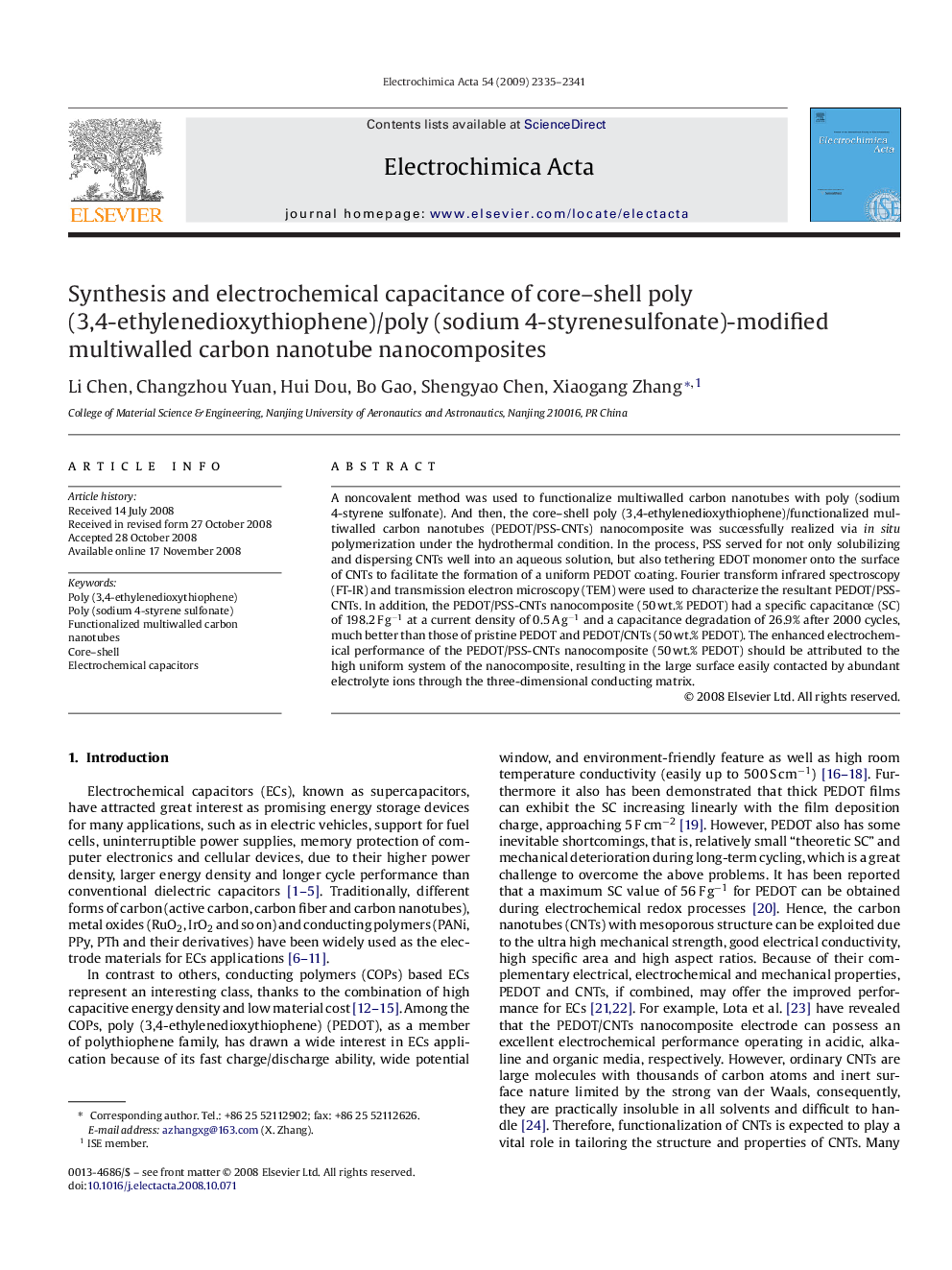| Article ID | Journal | Published Year | Pages | File Type |
|---|---|---|---|---|
| 192787 | Electrochimica Acta | 2009 | 7 Pages |
A noncovalent method was used to functionalize multiwalled carbon nanotubes with poly (sodium 4-styrene sulfonate). And then, the core–shell poly (3,4-ethylenedioxythiophene)/functionalized multiwalled carbon nanotubes (PEDOT/PSS-CNTs) nanocomposite was successfully realized via in situ polymerization under the hydrothermal condition. In the process, PSS served for not only solubilizing and dispersing CNTs well into an aqueous solution, but also tethering EDOT monomer onto the surface of CNTs to facilitate the formation of a uniform PEDOT coating. Fourier transform infrared spectroscopy (FT-IR) and transmission electron microscopy (TEM) were used to characterize the resultant PEDOT/PSS-CNTs. In addition, the PEDOT/PSS-CNTs nanocomposite (50 wt.% PEDOT) had a specific capacitance (SC) of 198.2 F g−1 at a current density of 0.5 A g−1 and a capacitance degradation of 26.9% after 2000 cycles, much better than those of pristine PEDOT and PEDOT/CNTs (50 wt.% PEDOT). The enhanced electrochemical performance of the PEDOT/PSS-CNTs nanocomposite (50 wt.% PEDOT) should be attributed to the high uniform system of the nanocomposite, resulting in the large surface easily contacted by abundant electrolyte ions through the three-dimensional conducting matrix.
